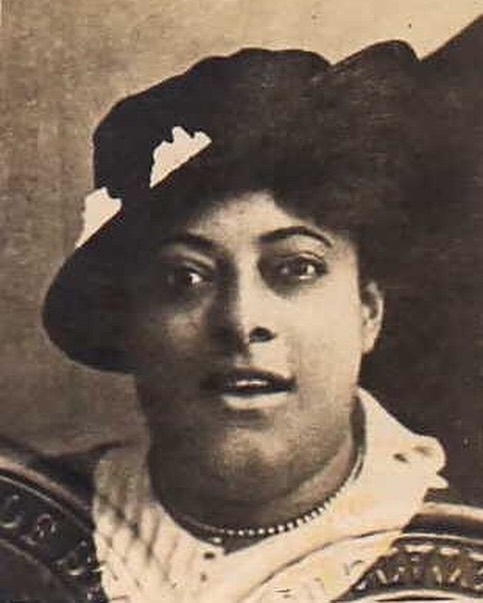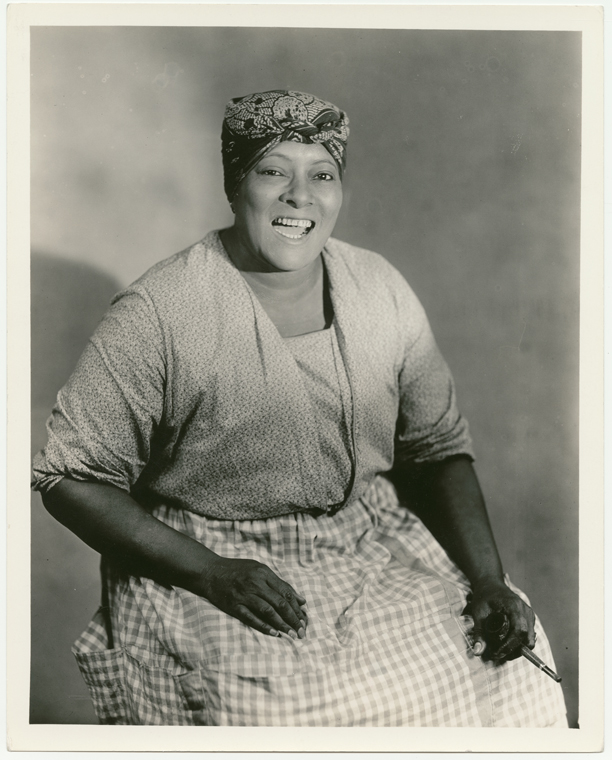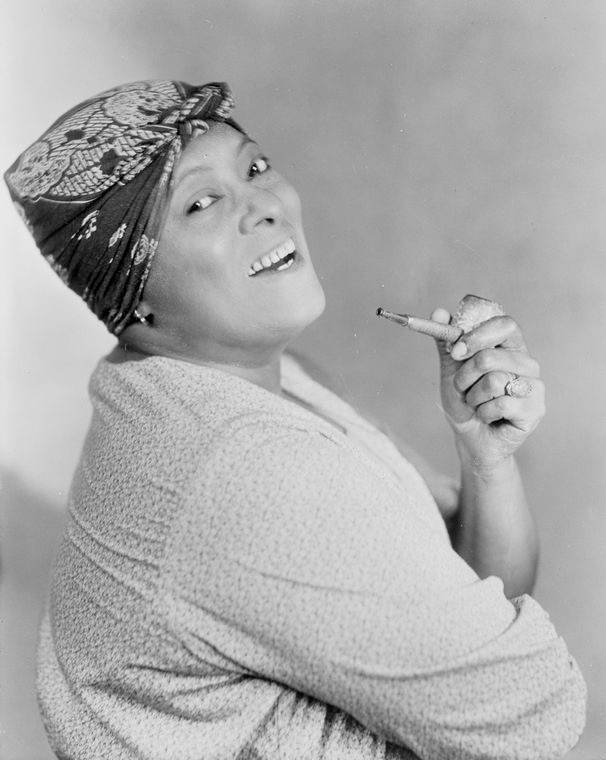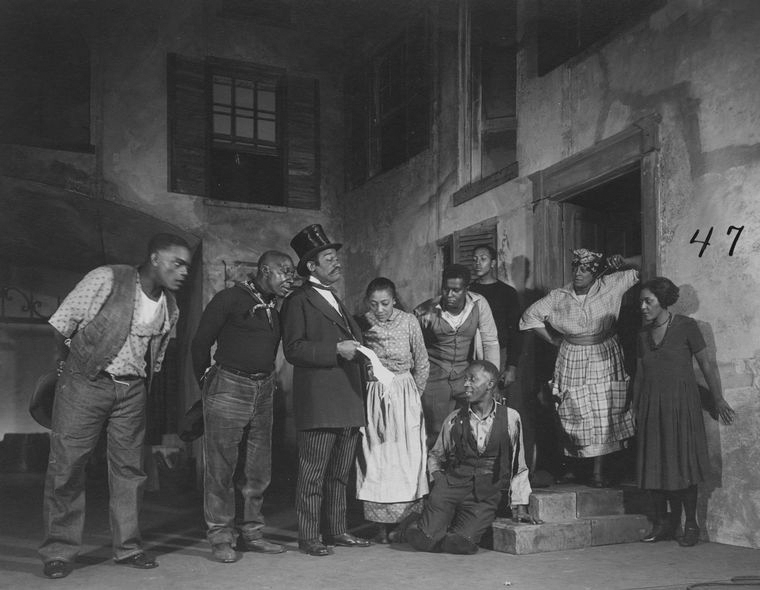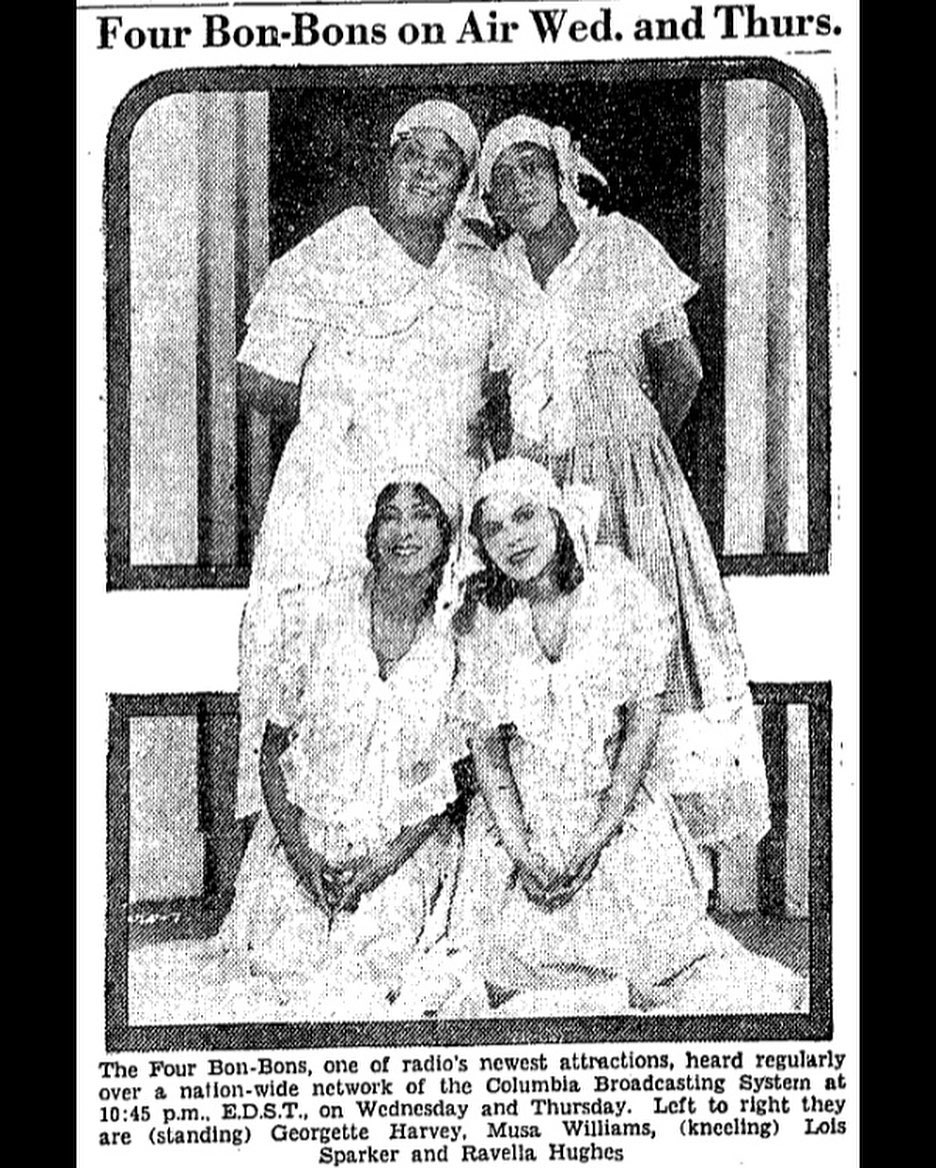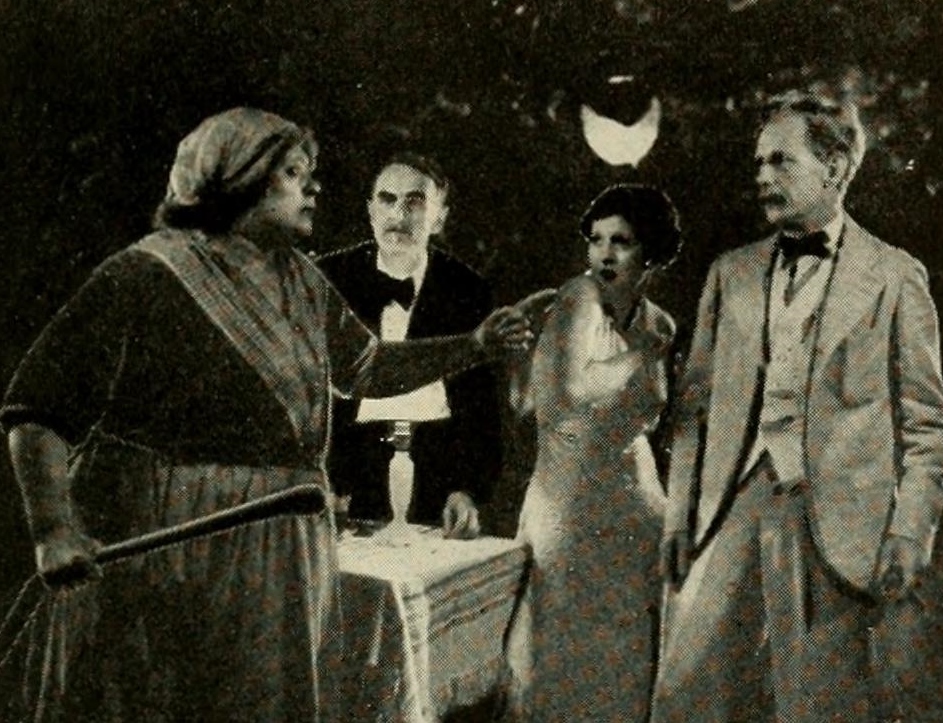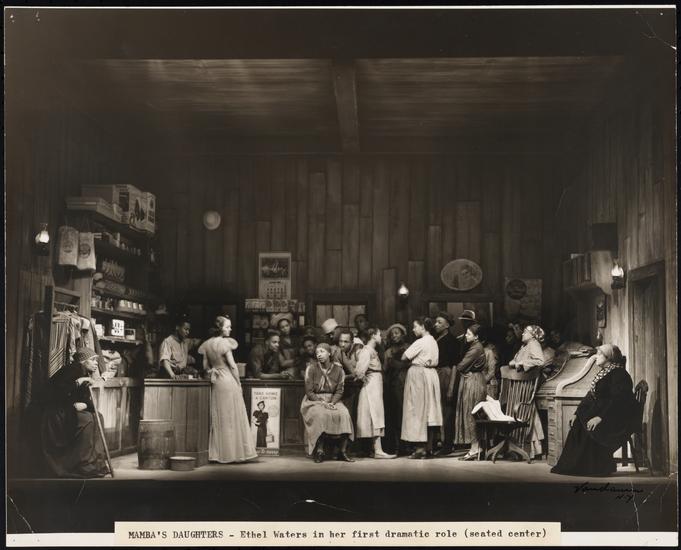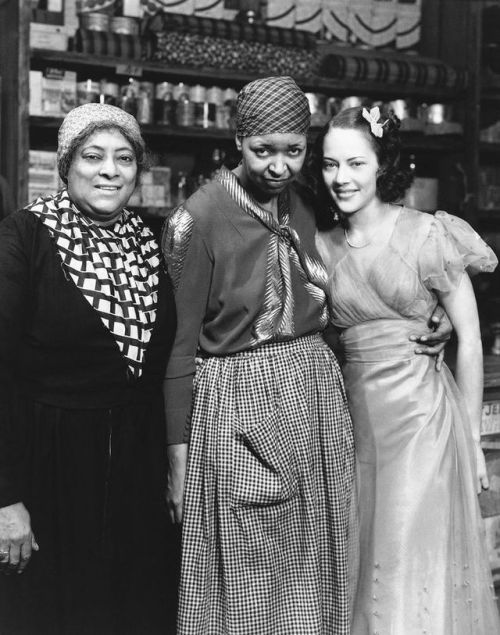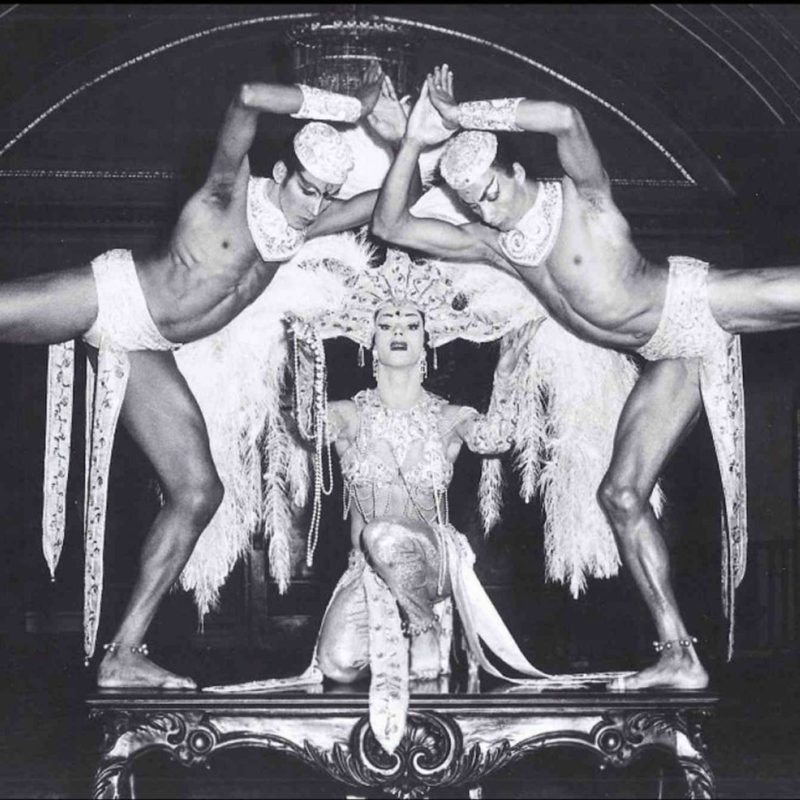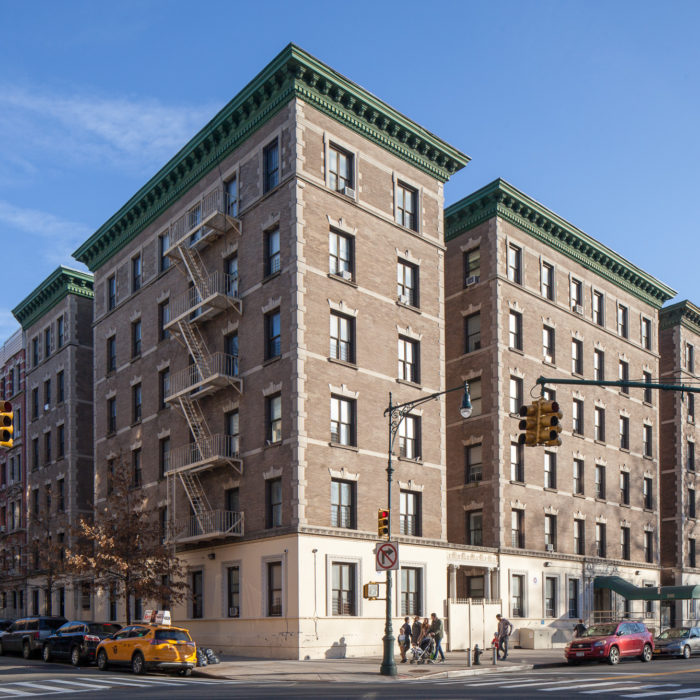
Georgette Harvey & Musa Williams Residence
overview
From 1935 until sometime between 1940 and 1942, the Black lesbian couple Georgette Harvey and Musa Williams lived at the Lafayette Apartments in Harlem, where they frequently entertained theater notables and leading figures of the Harlem Renaissance.
Harvey, in particular, was a popular vaudeville performer who also appeared in movies and on Broadway, where she was best known for originating the role of Maria in Porgy (1927) and Porgy and Bess (1935).
History
Raised in her native St. Louis, Missouri, Georgette Harvey (1882-1952) made her stage debut in a 1905 act led by Ernest Hogan, the influential Black entertainer who helped popularize ragtime music. Richard Nugent later recalled that Harvey had a “deep — very deep — contralto voice” and that “she was the leader of an exceptionally fine group of singers” known as the Creole Belles, a vaudeville quartet that toured America and Europe. After the group broke up, she continued as a solo act, primarily in Russia. In c. 1921, she moved to New York City.
Historian Eric K. Washington notes that Harvey was “a leading African-American and LGBT theater figure to emerge before, during, and after the storied Harlem Renaissance era of the 1920s.” In 1923, she made her Broadway debut in Runnin’ Wild at the New Colonial Theater (demolished). She appeared in 25 Broadway productions. Harvey is best known for originating the role of Maria in the DuBose Heyward play Porgy (1927), performed at the Guild Theater (now the August Wilson Theater), and in a 1929 revival. She again played Maria in the George Gershwin folk-opera Porgy and Bess (1935), performed at the Alvin Theater (now the Neil Simon Theater), as well as in three revivals. Her last Broadway performance was in Lost in the Stars, which ran from 1949 to 1950 at the Music Box Theater.
From the 1920s to the 1950s, according to Washington, Harvey lived with her long-term partner, Black actress Musa Williams (birth-death years unknown) in various Harlem apartments and frequently hosted popular parties. The couple first lived at 2041 Fifth Avenue before moving around the corner to 2 East 127th Street. In 1935, they moved to the Lafayette Apartments, 320 Manhattan Avenue, where they hosted guests such as Porgy director Rouben Mamoulian and leading figures of the Harlem Renaissance, such as singers Ethel Waters, Alberta Hunter, and Jimmie Daniels, and Richard Huey, head of a pioneering Harlem theater group. They lived here until sometime between 1940 and 1942.
During the 1930s, Harvey appeared in four Hollywood movies and the NBC television special, The Ethel Waters Show (1939), in which she performed a scene, with Waters and Fredi Washington, from their Broadway play Mamba’s Daughters (1939). She also screen tested for the role of Mammy in Gone with the Wind (1939), which went to Hattie McDaniel. On stage and on screen, as for most Black actors at that time, Harvey’s opportunities were limited to minor, stereotypical roles. She became involved, as an officer, with the Negro Actors Guild of America, an organization formed in 1936 and began operating a year later to push for better representation of Black people in film, television, and theater.
While less is known about Williams, she performed in 13 Broadway productions, joining Harvey in Blackberries of 1932 (Williams’ debut), Dance With Your Gods (1934), Porgy and Bess, and its three following revivals. Her last performance was in the play Cat on a Hot Tin Roof, which ran from 1955 to 1956 at the Morosco Theater (demolished). Washington notes that, as part of the Four Bon-Bons quartet, Harvey and Williams were reportedly the first Black act to broadcast over television, singing “St. James Infirmary” in October 1931. Following Harvey’s death in 1952, the Baltimore Afro-American wrote that “she made her home with Miss Musa Williams, an actress friend of 20 years or more, at 351 West 114th Street,” the Monterey apartment building located catty-corner to their former residence at the Lafayette Apartments.
Entry by Amanda Davis, project manager (July 2020), and based on research by Eric K. Washington, historian.
NOTE: Names above in bold indicate LGBT people.
Building Information
- Architect or Builder: Neville & Bagge
- Year Built: 1897
Sources
Bessye Bearden, “New York Society,” The Chicago Defender, April 6, 1935, 6.
“Chloe, Love Is Calling You (1934),” Black Horror Movies, bit.ly/30SGBbg.
Eric K. Washington, NYC LGBT Historic Sites Project Site Suggestion Form, 2017.
Eric K. Washington, @taggingthepast, Instagram, June 8, 2019. [source for Eric Washington and Baltimore Afro-American quotes]
“Georgette Harvey,” Internet Broadway Database, bit.ly/2VzuZ9I.
“Georgette Harvey,” Internet Movie Database, imdb.to/31w9vyp.
“Georgette Harvey, a Stage and Screen legend,” African American Registry, bit.ly/30UCmfB.
“Miss G. Harvey, 69, Actress, Singer,” The New York Times, February 18, 1952, 19.
“Musa Williams,” Internet Broadway Database, bit.ly/2NL85b9.
“Red, White and Blue Ball,” Negro Actors Guild of America Newsletter, February 1, 1942, 1.
Richard Bruce Nugent, “On Georgette Harvey,” in Gay Rebel of the Harlem Renaissance: Selections from the Work of Richard Bruce Nugent, ed. Thomas H. Wirth (Durham, NC: Duke University Press, 2002), 211-214. [source of Nugent quotes]
Do you have more information about this site?
This project is enriched by your participation! Do you have your own images of this site? Or a story to share? Would you like to suggest a different historic site?
